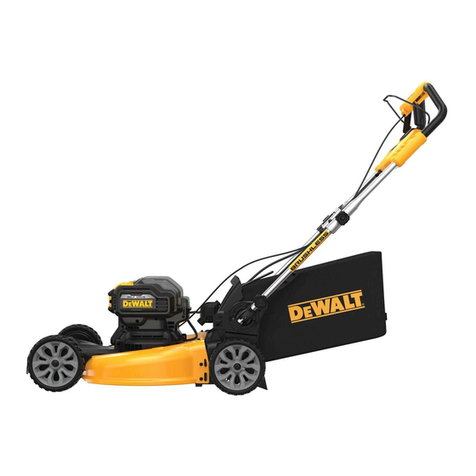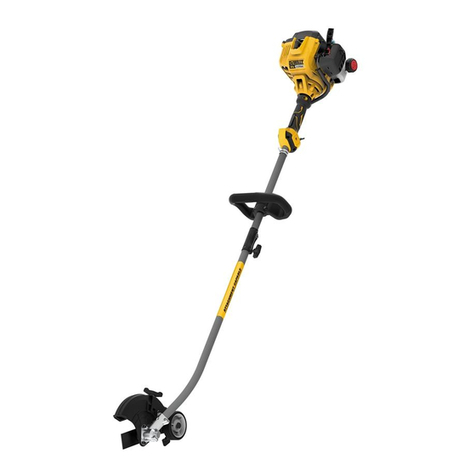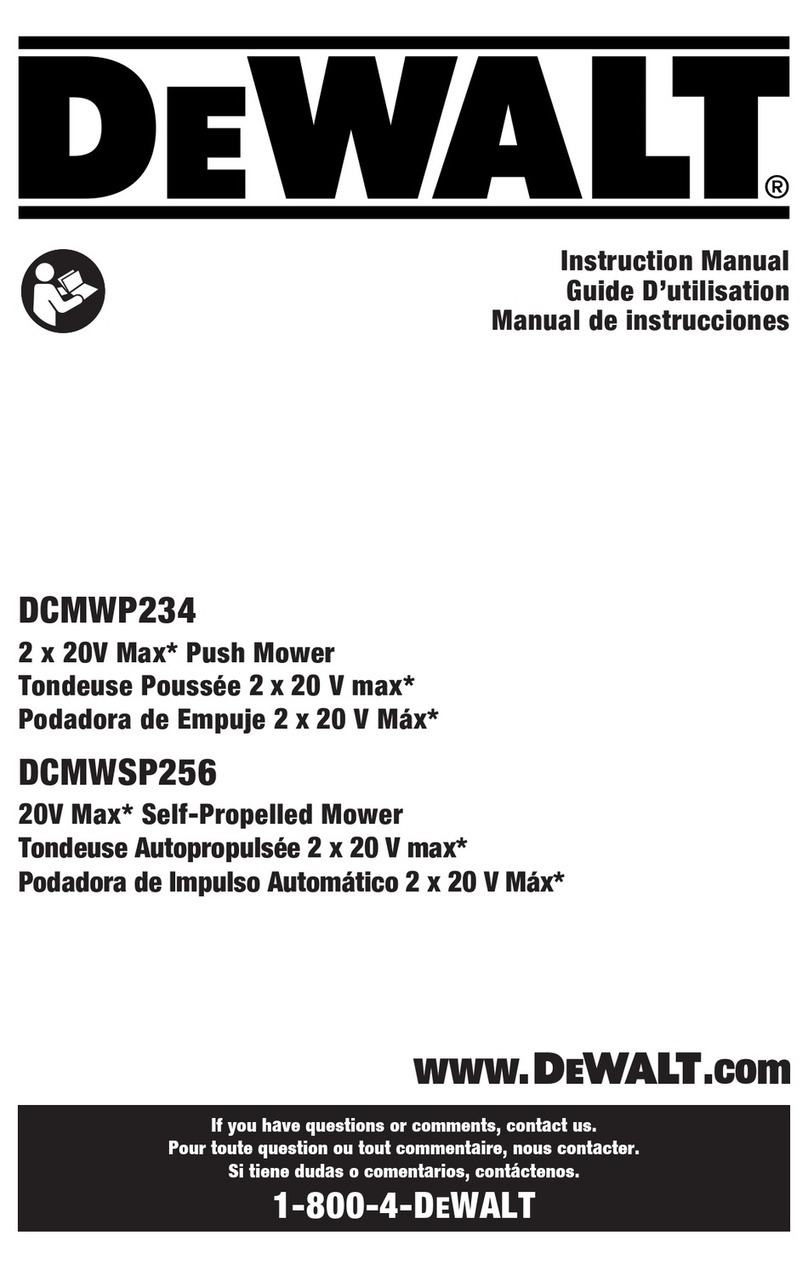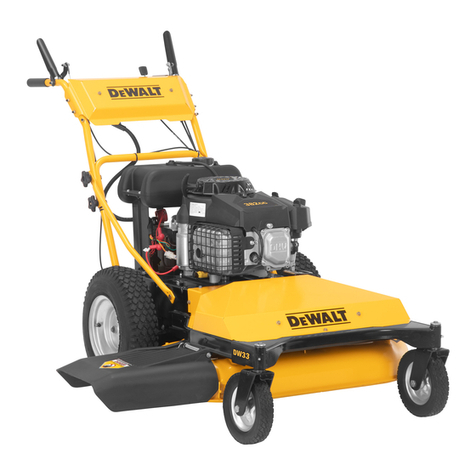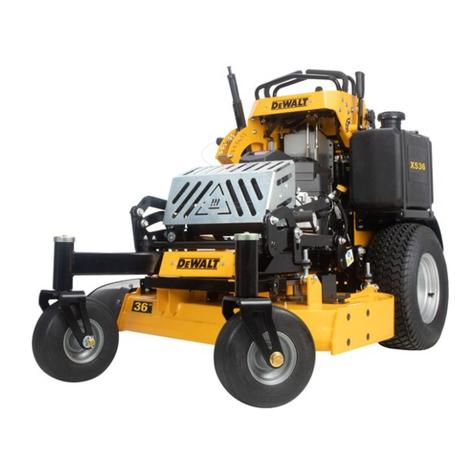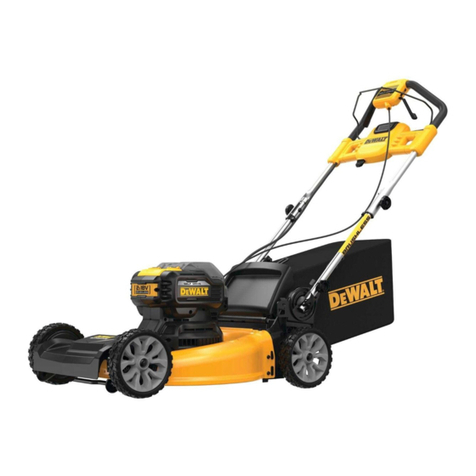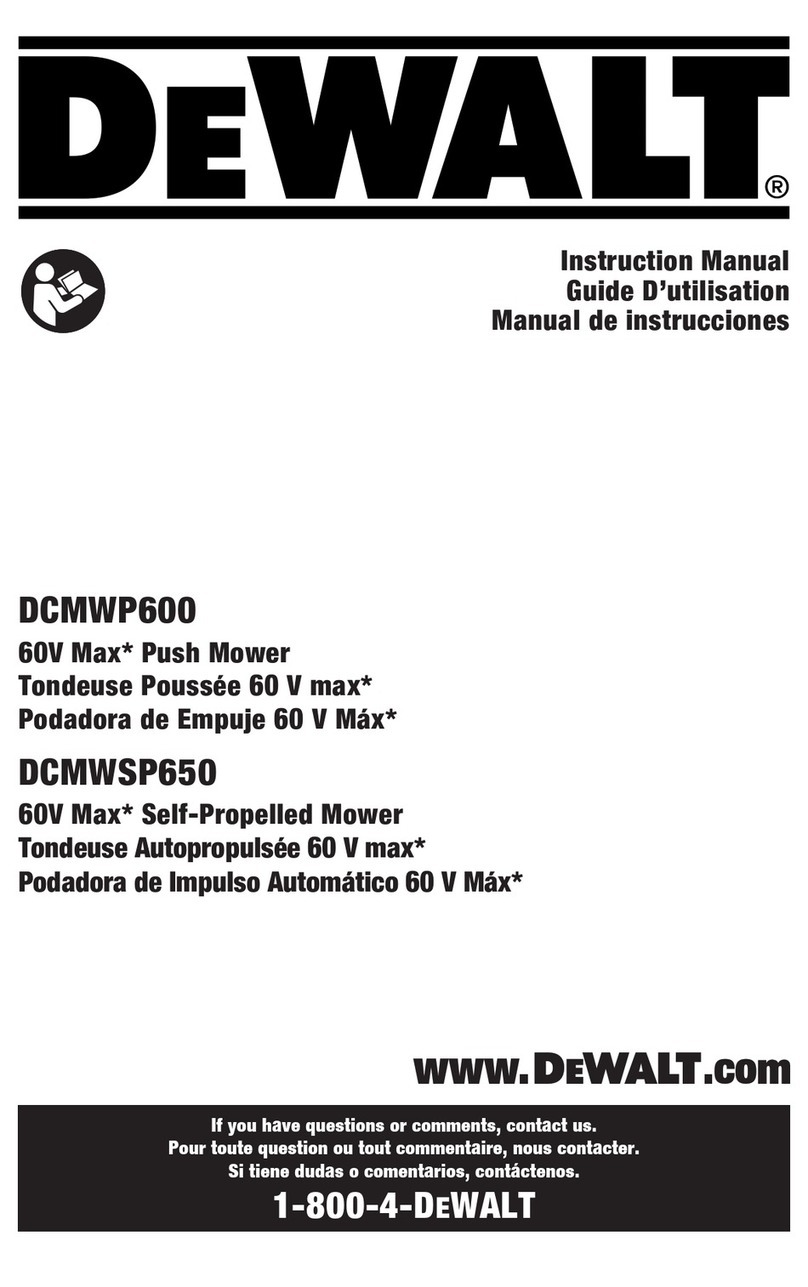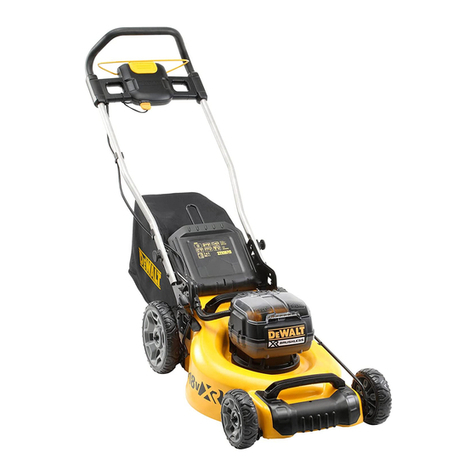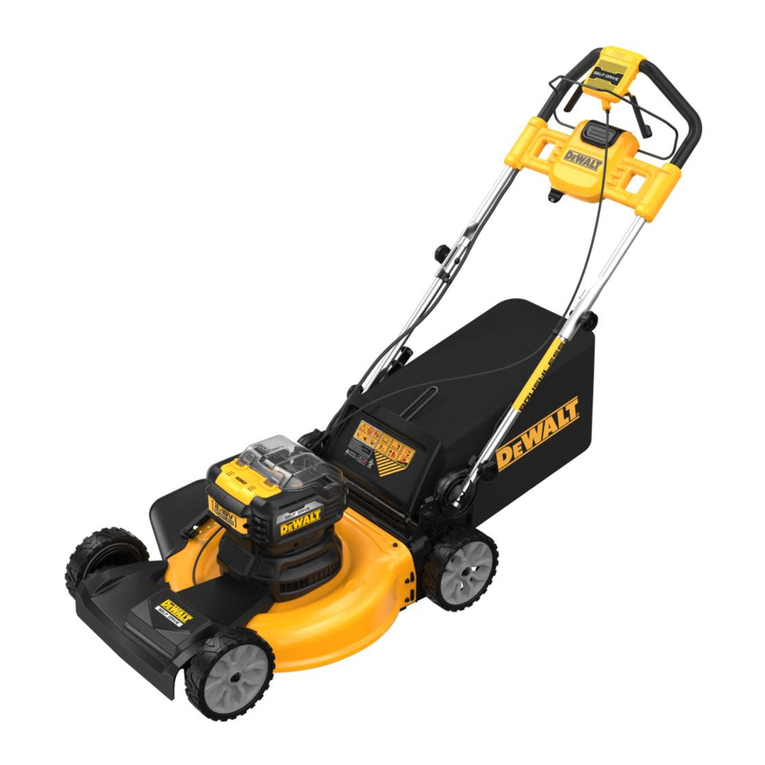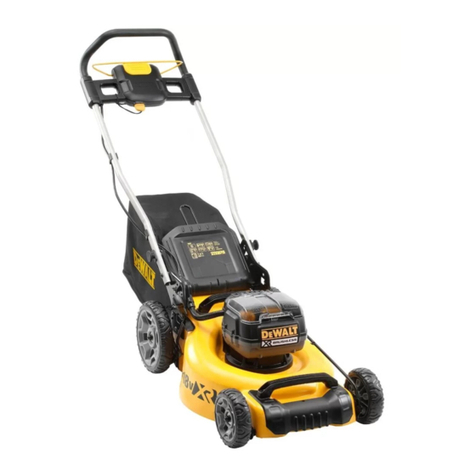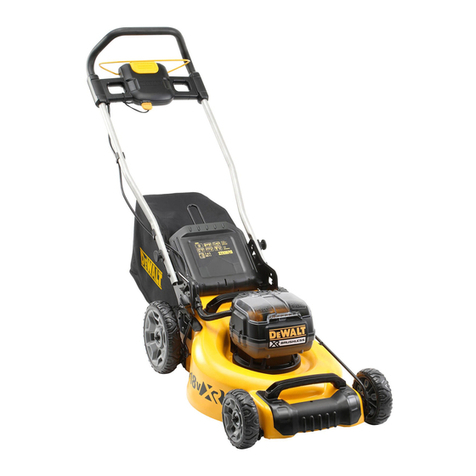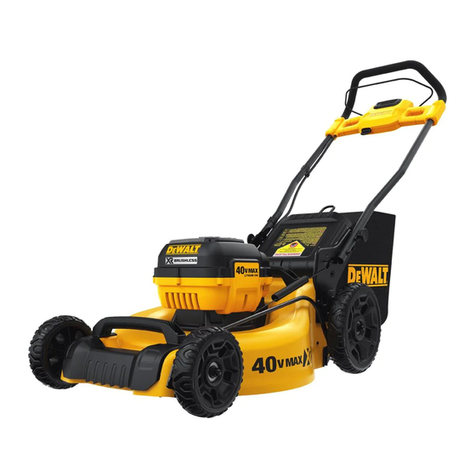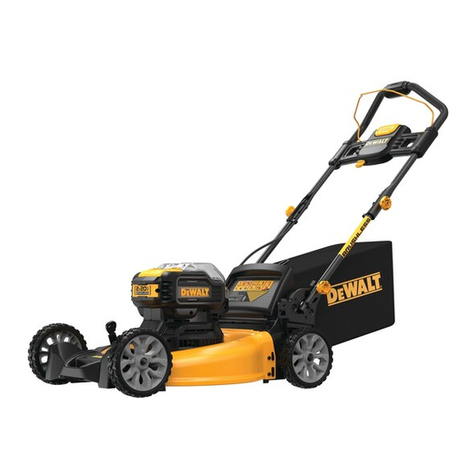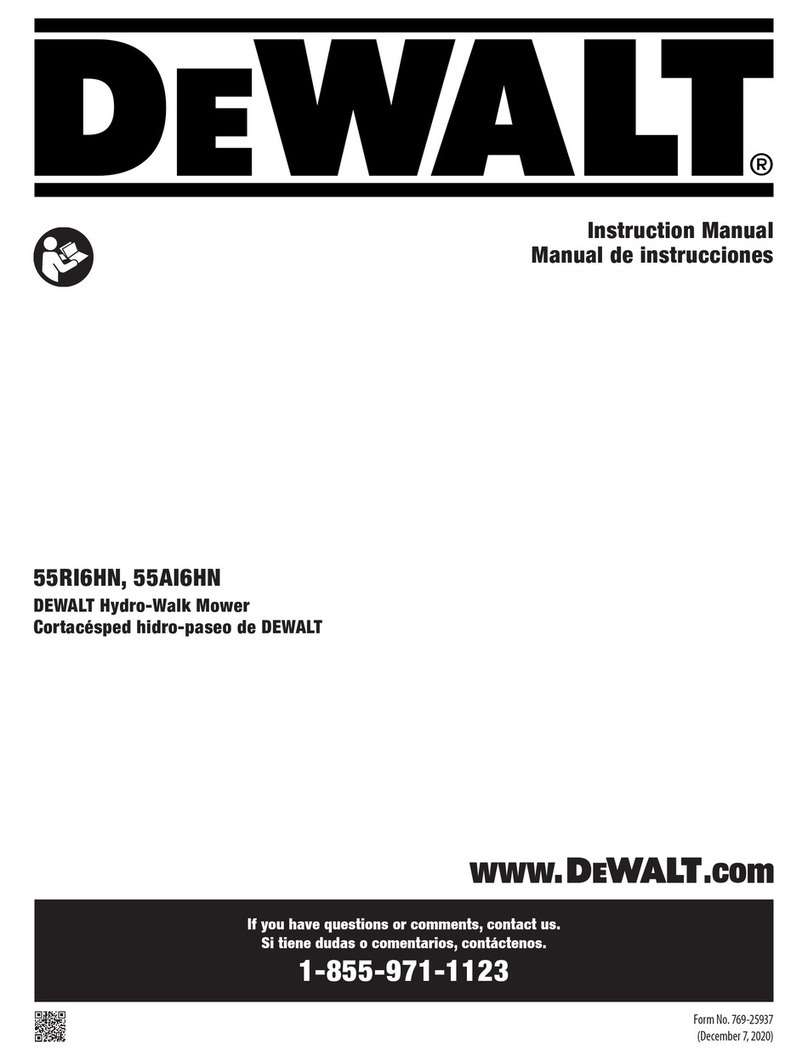
5
c. Pull the mower back slowly, no more than half
way toward you.
d. Repeat these steps as needed.
4. Do not engage the drive control (if equipped) while
starting engine.
5. The blade control is a safety device. Never attempt
to bypass its operation. Doing so makes the safety
device inoperative and may result in personal injury
through contact with the rotating blade. The blade
control must operate freely in both directions and
automatically return to the disengaged (off) position
when released. The cutting blade continues to
rotate for up to three seconds after the blade control
is released. Never place any part of the body in
the blade area until you are certain the blade has
stopped rotating.
6. If the mower should start to vibrate abnormally, stop
the engine and check immediately for the cause.
Vibration is generally a warning of trouble.
7. Never operate mower without the proper trail shield,
discharge cover, grass catcher, blade control or other
safety protective devices in place and working.
Never operate mower with damaged safety devices.
Failure to do so can result in personal injury.
8. When starting engine, pull cord slowly until
resistance is felt, then pull rapidly. Rapid retraction of
starter cord (kickback) will pull hand and arm toward
engine faster than you can let go. Broken bones,
fractures, bruises or sprains could result.
9. Do not put hands or feet near rotating parts or
under the cutting deck. Contact with the blade(s)
can amputate hands and feet.
10. Watch for holes, ruts, bumps, rocks, or other hidden
objects. Uneven terrain or hidden objects could
cause a slip and/or trip accident. Tall grass can
hide obstacles.
11. Your mower is designed to cut normal residential
grass of a height no more than 7”(17.5 cm). Do not
attempt to mow through unusually tall, dry grass
(e.g., pasture) or piles of dry leaves.
12. Plan your mowing pattern to avoid discharge of
material toward roads, sidewalks, helpers and the
like. Avoid discharging material against a wall or
obstruction which may cause discharged material to
ricochet back toward the operator.
13. Shut the engine off and wait until the blade comes
to a complete stop before removing the grass
catcher or unclogging the chute. The cutting blade
continues to rotate for up to three seconds after the
blade control is released. Never place any part of
the body in the blade area until you are certain the
engine is off and the blade has stopped rotating.
14. A missing or damaged discharge door, chute or
mulch plug can cause blade contact or thrown
object injuries.
15. Do not operate the mower without the discharge
door, chute, mulch plug or the entire grass catcher
in its proper place.
16. Stop the mower blade when crossing gravel drives,
walks, or roads and while not cutting grass.
17. Mow only in daylight or good artificial light.
18. Do not operate the mower while under the
influence of alcohol or drugs.
19. The muffler and engine become very hot and can
cause serious burn injuries. Do not touch. Allow
the mower to cool for at least five minutes before
storing or attempting any service.
20. Never run an engine indoors or in a poorly ventilated
area. Engine exhaust contains carbon monoxide, an
odorless and deadly gas.
Children
1. Tragic accidents can occur if the operator is not
alert to the presence of children. Children are often
attracted to the mower and the mowing activity.
They do not understand the dangers. Never assume
that children will remain where you last saw them.
2. Keep bystanders, children and pets inside while
the mower is in operation under watchful care of
a responsible adult other than the operator. Stop
mower if anyone enters the area.
3. Be alert and turn mower off if a child or bystander
enters the area.
4. Never allow children under 14 years of age to
operate this mower. Children 14 and over should
read and understand the instructions and safe
operation practices in this manual and on the
mower and should be trained and supervised by
an adult.
5. This mower is a precision piece of power equipment,
not a plaything.Therefore, exercise extreme caution
at all times.This mower has been designed to
perform one job: to mow grass. Do not use it for any
other purpose.
6. Use extreme care when approaching blind corners,
doorways, shrubs, trees or other objects that may
block your vision of a child who may run into the
path of the mower.
7. Keep children away from hot or running engines.
They can suffer burns from a hot engine or muffler.
8. If your mower is equipped with an Electric Start Push
Key, remove the key when the mower is unattended
to prevent unauthorized operation. Make certain the
key is inaccessible to small children.
SAFE OPERATION PRACTICES, cont'd
